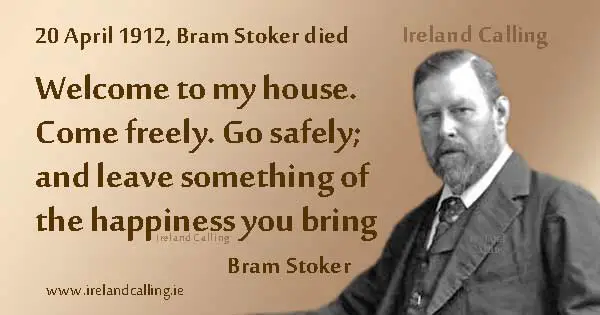The story of Count Dracula by Irish author Bram Stoker has fascinated and terrified cinema audiences for more than a century.
There have been dozens of films, TV series and various spin-offs including everything from comic books to computer games.

The BBC version starring Danish actor Claes Bang with its ultra-modern take on the vampire legend is the latest version to strike terror into the hearts of viewers, but it surely won’t be the last.
It’s often thought that Stoker based his anti-hero on ancient legends from Romania, or even the Russian ruler Vlad the Impaler, who was particularly brutal even by unbridled dictator standards.
However, the true inspiration may have been much closer to home for Stoker.
Bob Curran, a former lecturer at Ulster University, believes that Dracula is pure Irish. Curran has spent a lifetime studying the legend and has even written books about it, including Vampires: A Field Guide to the Creatures That Stalk the Night.
He believes that Stoker based Dracula on an Irish chieftain called Abhertach, who is buried in Slaughtaverty between Garvagh and Dungiven in Co Derry.
Legend has it that Abhertach terrorised local people with his unpredictable outbursts of violence and brutality. Some brave souls gathered together and attempted several times to kill him but always failed.
After each unsuccessful assassination attempt, Abhertach would reappear to terrify his would be assailants and demand a bowl of blood.
Curran told the BBC that Abhertach “was one of the night’s walking dead”.
Eventually, his reign of terror came to an end when he was killed by a sword made of yew wood. This may have given rise to the legend that vampires could only be killed by having a wooden stake pierce their heart.
Abhertach was buried upside down to make it harder for him to escape his coffin, a move that seems to have worked because there were no further reports of him having reappeared.
Curran is convinced that Stoker would have heard the story because it was well known in Ireland.
He told the BBC: “Lady Wilde, Oscar Wilde’s mother, certainly knew about it and Stoker was a regular visitor to the Wilde’s house in Dublin.”
However, Curran believes that the Dracula story wasn’t just a piece of grisly escapism; it’s also a commentary on the way Irish peasants were terrorised by landlords at the time.
In Stoker’s novel, Dracula is also a landlord. Curran said: “All the elements of Ireland are there and you’re not looking at a horror novel but at a novel of contemporary issues and about contemporary Ireland.”

Abhertach may not be the only Irish link in the story of Dracula.
In the novel, one of his victims is called Lucy Westenra. Westenra was the name of a wealthy family in Monaghan. A local church, St Patrick’s, has a sculpture portraying the deathbed scene of a beautiful young woman.
It was dedicated to Mary Ann Westenra by her grieving husband.
Bram Stoker would have visited the area as part of his duties as an Inspector of Petty Sessions and may have seen the sculpture while attending a church service.
